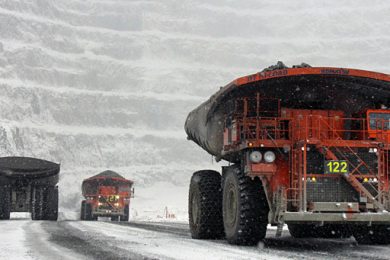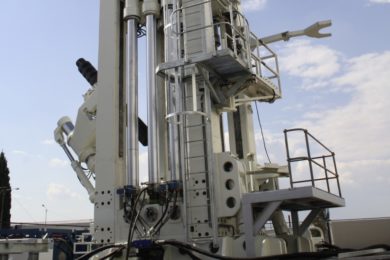MinerAndina.Com reports that on the first day of CESCO Week (April 3-7) in Santiago (Chile) –a study conducted by the Comisión Nacional de Productividad (CNP) was presented, which determined a 54% labour productivity fall in the Chilean copper industry between 2000 and 2014, period in which copper production had grown 19%.
“This,” MinerAndina.Com reports “is mainly explained because the Chilean worker spends less hours in his position, and for him to be one hour at work, there are more requirements and personnel support (supervisor, training, administration, etc.), in relation to the international average. As the worker spends less time at work, the installed capital (equipment, plant) is used less.”
The report, Informe de Productividad de la Gran Minería del Cobre en Chile, was commissioned by the Government in order to propose public policy recommendations to reverse the decline in mining productivity in the last 15 years.
Alfie Ulloa, Executive Secretary of the CNP, said that the findings identified in the report can be grouped into three large groups: private, sectorial and public. “The first (private) are manageable by companies themselves and cannot be public matter nor can it be managed by the CNP.
“The second case (sectorial) require coordination between the sector’s agents, for example, mining companies with their suppliers and/or contractors (among others). The third case are factors manageable by the public side”.
Findings of public nature
- The approval system for large projects is extremely long, a situation which negatively influences investment. There is a lot of red tape, “for example, exploration concessions take over eight months and mining concessions can take up more than two years”, Ulloa said
- Investment in exploration is low. “Considering that Chile spends up to 16% in exploration and produces almost 30% of the world’s copper production, our exploration numbers are not in line with our production”, he said
- There is an important human capital gap. There is a need to prepare a significant amount of operators and maintainers, as well as preparing for competencies and for increasingly automated technology. “The human capital is key for a substantial improvement in the productivity sector. The public sector must be part of the solution”, he said.
- Relations between companies and communities, the state and the local governments, must facilitate long-term solutions and of mutual benefit in a transparent and credible way.
Findings of a sectorial nature
- Make more efficient use of strategic resources and common infrastructure for mining
- Aim at reducing accreditation times of contracting companies through the agreement of standards and homologation of admission requirements with mining companies
- Mining companies should homologate operational information they generate, to replicate the Benchmark study in a simpler way
- Continue to move towards adherence to the qualification framework, for both, companies and the training sector
- The establishment of certain technological standards (interoperability), among others.
Among the private nature findings was the excessive rotation of senior managers and the existence of too much hierarchy. Organizational culture is biased towards control versus one of empowerment and accountability and little meritocracy; insufficient adherence and fulfillment of plans (i.e. maintenance), among others.
Resolution of management problems and how to involve workers in the solutions to improve productivity are pending, as well as further dialogue with them.
It is, finally, about the great challenge going through a culture change in the country. The CNP will submit its Recommendations to the Government.










